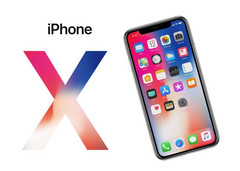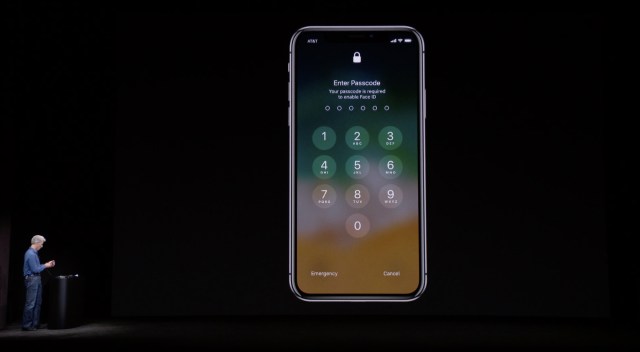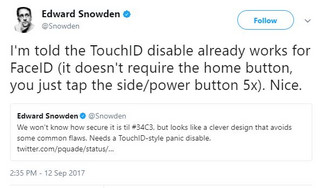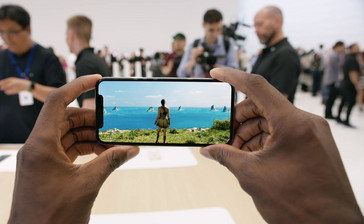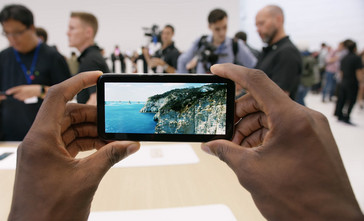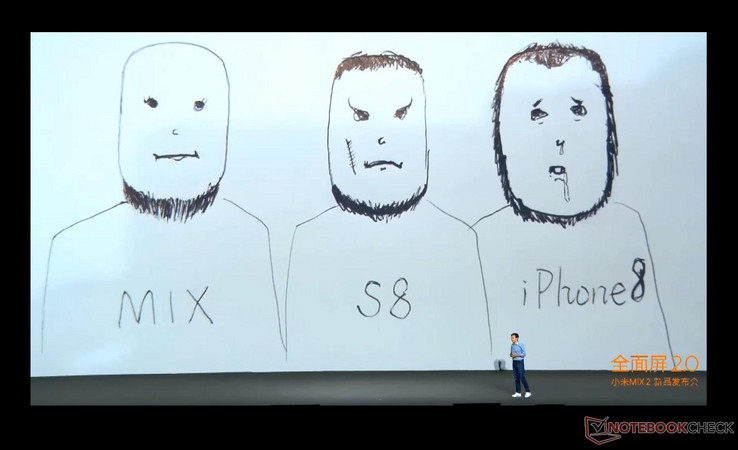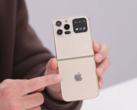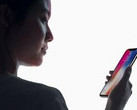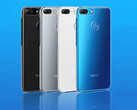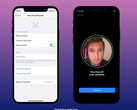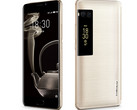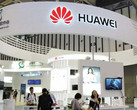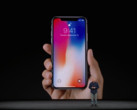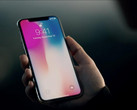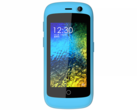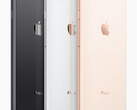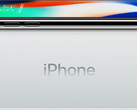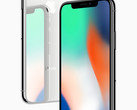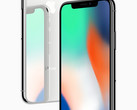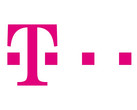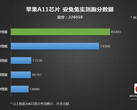For the original German article, see here.
Without a doubt, the star of Apple’s September 12 show was not the new iPhone 8, which has been mocked and memed in social media outlets almost instantly, but the iPhone X instead. Apple claims the iPhone X to be the future of the smartphone, and we for one are very interested to see whether or not the first hands-on reports will be able to confirm Apple’s daring claims. If you’re not quite familiar with the iPhone X yet PhoneArena has published an 8-minute summary of Apple’s keynote containing all the official facts.
New or Plagiarized?
Many of Apple’s alleged innovations mentioned during the keynote may be new to Apple users, but they are certainly not new for the industry as a whole. The new OLED display that Apple refers to as Super Retina Display is already well-known to Android users through the likes of Samsung and others. According to Apple, only now has the technology finally matured enough to be good enough to be used in an Apple product. The borderless display at the front is also well-known at this point, with Xiaomi kicking of the trend last year with the Mi Mix. A few years before, Sharp introduced its Aquos series with no bezels on three sides of the display, although these were limited to Japan mostly (they were also a contract-free alternative in the US). This year alone, a plethora of 18:9 smartphones with no or almost no bezels ranging from Samsung’s Galaxy S8 to the Essential Phone have been launched.
The rear-facing camera now offers dual optical image stabilization; this is something Samsung’s Galaxy Note 8 also features. This brings us to the two most important new iPhone X features: its three-dimensional facial recognition feature called Face ID, which is implemented via a so-called True Depth camera system at the front of the phone supported by dedicated AI algorithms and meant to completely replace Touch ID, and the new home screen gestures that we assume were a necessity rather than an optional extra given the complete lack of a home button.
Face ID: good enough to replace Touch ID?
Let’s not make the mistake of comparing Face ID to the mostly rather simplistic and crude facial recognition features of Android phones of the past. Apple has invested heavily and improved the feature massively in order to avoid getting tricked by using a simple photo or face mask. Its algorithms have been fine-tuned to not get thrown off by low-light environments, make-up, facial hair, and the inevitable process of aging. The infamous Face ID fail by Craig Federighi during the keynote that has since been used repeatedly to “prove” how terrible Face ID works may not even have been one in the first place. To illustrate what we are talking about take a look at this short scandalized video by Lew, better known as Unbox Therapy, according to whom this was clearly a case of failed facial recognition:
Face ID: to fail or not to fail?
However, other observers have noted that the iPhone asked for a PIN code in order to “enable Face ID”. This screen should be well known to iPhone users using Touch ID since it can be seen every time the iPhone reboots. While a reboot of said demo device prior to the demonstration would have certainly been rather embarrassing it does not even hint at Face ID’s reliability, as TheVerge notes in its analysis of the alleged fail. Subsequent usage of Face ID during the presentation using a backup iPhone worked well and seemed pretty reliable.
Update: according to Yahoo, Apple has issued a statement addressing this incident. According to the phone’s log files the problem was caused by Apple employees preparing the event. Apparently, when preparing the phones for this particular demo, they failed to notice that Face ID tried to recognize their faces multiple times. Just like Touch ID, the PIN code is required after a certain amount of failed Face ID unlock attempts. This is exactly what we have witnessed during the presentation.
True Depth Camera System aka Kinect 2.0?
Whether or not Face ID is going to work well remains to be seen. Let’s not cross that bridge before we come to it and wait for the release of the iPhone X for final assessments. We do expect some issues in certain situations though, such as a mountain biker wearing a helmet and a face mask trying to unlock the phone. Given that Touch ID is not available on the iPhone X anymore users might be asked for the PIN code more often than they bargained for. In other news, Apple’s innovative True Depth Camera System (innovative for a smartphone, that is) could be related to Microsoft’s Kinect technology that was at one point destined to be used for unlocking Windows computers.
Just like Kinect, Apple’s so-called dot projector places IR dots on the human face and reads these using an IR receiver. The innovative part is that the system has been shrunk enormously to fit into a smartphone, and that it will be enhanced in software by neural network algorithms that Apple has purchased through the acquisitions of various start-ups such as PrimeSense in 2013, FaceShift in 2015, and RealFace in 2017. Whether Apple has been able to solve the issues that plagued the Kinect facial recognition feature, namely the highly unreliable recognition of dark-skinned faces, remains to be seen. Even if it turns out to work as expected and as reliable as Apple claims, TheVerge notes that facial recognition has some unique legal implications that do not affect passwords.
Edward Snowden fears mischief
Security expert and NSA whistleblower Edward Snowden is not too happy with recent developments. On the one hand, he did applaud Apple in two separate tweets for including a panic mode that temporarily disables Face ID similar to Apple’s Touch ID implementation thereof. On the other hand, he fears that this might put the final nail in the coffin of restraints regarding facial recognition, which could potentially open the flood gates to abuse and misuse. Regarding safety, Apple stated that the facial scan (unlike Touch ID only a single face can be scanned and saved so far) remains saved offline inside the phone’s secure enclave exclusively, and that it is under no circumstances transferred onto Apple’s servers. In addition, Face ID requires active participation and will, for example, refuse to unlock the phone if the user has his or her eyes closed.
New BlackBerry Home Screen Gestures
Due to its lack of a home button, the new iPhone X supports new gestures that are supposed to replace the home button’s functionality in iOS. The three most important ones are swiping up to return to the home screen, swiping up and holding to open the app switcher, and swiping down from the top right corner to open the new Control Center. Apparently, to a lot of people’s surprise Apple has taken inspiration from older BlackBerry smartphones like the Z10 that first introduced swiping up to return to the home screen in 2013. This can be clearly seen in the following video:
YouTube and Tech-Sites
Last but not least, we would like to summarize the tech community’s reaction to the iPhone X. In particular, those who already had the chance for a first hands-on experience at Apple’s event center after the keynote. Regular users will have to wait until November 3, and our guess is that the phones are simply on backorder and Apple failed to produce enough units for an earlier launch. The device’s high price ($999 for the 64 GB model, $1,149 for the 256 GB model) was also an issue in these various assessments.
Famous YouTube personality Marques Brownlee, better known as MKBHD, first focuses on the iPhone 8 and the new Apple Watch but quickly turns to the iPhone X in his video. It becomes clear quite soon that the indentation at the top containing the front-facing sensors and cameras can seem odd at times, for example when watching a full-screen video since part of the video is going to get covered by the sensor strip. The alternative is thick black bezels at the top and bottom, as can be seen in the following two screenshots from MKBHD’s video, and of course the video itself.
Some like it…
While Marques liked the iPhone X overall he did note in the end that launching Siri via the power button on the side seemed odd, and that while he didn’t have any official data yet the iPhone X’s display seemed darker than the Galaxy Note 8’s. Engadget emphasizes the smartphone’s form factor and compact size, and that despite the large display it doesn’t feel clunky at all. Regarding the new iPhone’s form factor, TechRadar notes that the bezels around the display are not as thin as they are on other phones. Xiaomi has also commented on this during its Mi Mix 2 presentation with a rather humorous slide on which the smartphone was still referred to as iPhone 8.
…some don’t
While we’re in the Android corner let’s see what Android Authority has to say about the phone. In the aptly named “Four reasons why I won’t buy the iPhone X” Mitja Rutnik not only proclaims that he considers the iPhone X too expensive but also not nearly innovative enough – it lacks what he refers to as “the X factor” as well as a fingerprint reader and a headphone jack. In addition, he also doesn’t like the looks, particularly the aforementioned indentation at the top.
Animojis are overrated
Presented by an overly enthusiastic Craig Federighi during the keynote, Apple’s animojis are primarily aimed at younger users. ArsTechnica’s Samuel Axon praised the OLED display and its HDR features but failed to see the innovation in animojis when compared to webcam support for avatar representation in games such as EverQuest II or Star Citizen. In addition, it is unclear at this point whether or not animojis are going to work in messengers other than Apple’s own iMessage. Nevertheless, kids are going to go nuts over them. Update: Slate has declared animojis the most worrisome new iPhone feature.
Between Skeptical and Excited
The best way to describe our colleagues’ reactions is that they were somewhere between skeptical and excited. ArsTechnica, Engadget, and TheVerge all offer a rather favorable summary of their first impressions. Apple fans in particular will have a hard time accepting the iPhone 8 knowing that the iPhone X promises so much more. Steve Kovach of Business Insider explained his philosophy of “always getting the very best phone one can afford” and concludes that the iPhone X is well worth its asking price of $999.
If you’re not on a budget you might come to the same conclusion. The iPhone X certainly is not a bad phone, combining a plethora of new technologies hitherto unknown in iOS and the Apple universe with a trendy form factor. If, on the other hand, you cannot afford or don’t want to pay for the iPhone X there’s no reason to be mad (or sad). Almost all of its features are available elsewhere as well. Sure, they may not be combined with Apple’s unique design but in return they can be had for much less money. At the end of this article you’ll find two exemplary hands-on videos, one of which focuses on the differences between the iPhone 8 and X in more depth.
Source(s)
www.theverge.com/circuitbreaker/2017/9/12/16296912/apple-iphone-x-face-id-demo-fail
www.pcworld.com/article/209708/Is_Microsoft_Kinect_Racist.html
www.theverge.com/2017/9/12/16298192/apple-iphone-face-id-legal-security-fifth-amendment
twitter.com/Snowden/status/907730980701700096
twitter.com/Snowden/status/907719439705141250
twitter.com/_inside/status/907964955743399941
crackberry.com/apple-brings-some-blackberry-10-flavor-iphone-x
www.androidauthority.com/four-reasons-why-wont-buy-iphone-x-800177/
www.businessinsider.de/is-the-iphone-x-worth-1000-2017-9
finance.yahoo.com/news/really-happened-apples-face-id-fail-onstage-181213050.html




